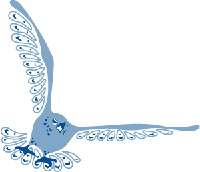|
||
| COMMUNITY FORUM | ||
| VIEW UPCOMING EVENTS | ||
| MOOSE KERR SCHOOL | ||
|
TAKE A TOUR OF THE TOWN |
HISTORY : INUVIALUIT
 The Inuvialuit are Inuit people who live in the Western Canadian Arctic region. The ancestors of the Inuvialuit and all other Inuit came from Arctic Alaska to the Canadian Arctic between approximately 800 and 1,000 years ago, according to archaeological evidence. The Inuvialuit consider themselves as distinct from other Canadian Inuit; the name they call themselves - Inuvialuit - means "real people." Two hundred years ago, there were roughly 2,500 Inuvialuit, making them one of the largest Inuit groups in Canada.
The Inuvialuit are Inuit people who live in the Western Canadian Arctic region. The ancestors of the Inuvialuit and all other Inuit came from Arctic Alaska to the Canadian Arctic between approximately 800 and 1,000 years ago, according to archaeological evidence. The Inuvialuit consider themselves as distinct from other Canadian Inuit; the name they call themselves - Inuvialuit - means "real people." Two hundred years ago, there were roughly 2,500 Inuvialuit, making them one of the largest Inuit groups in Canada.
The Inuvialuit mainly relied on sea mammals for nourishment, including seals, belugas and bowhead whales. Most sea mammal hunting transpired during the summer, although seals were hunted through the ice in winter. The Inuvialuit also hunted caribou, which they valued for both the animals' meat and hides. The Inuvialuit survived by eating the animals they hunted and fished. Each year, they dried and smoked hundreds of kilograms of meat and fish that was stored for the coming winter. The Inuvialuit were forced to move with the seasons as different resources became available.
19th Century
The nineteenth century brought about great change for the Inuvialuit. In the 1850s, the Inuvialuit began to trade with the Hudson's Bay Company, which had established trading posts at Fort McPherson and Fort Anderson. They soon became caught up in the fur trade and all it had to offer.
The next major change for the Inuvialuit came with the arrival of American whalers in the 1890s. The whalers brought with them an abundance of trade goods, including cloth, flour and guns. With the good, also came bad; the Americans also brought infectious diseases that had a devastating effect on Inuvialuit communities. By the time the whaling industry collapsed just twenty years later, ninety percent of the Inuvialuit had died, and their way of life had been almost destroyed. In 1904, the Government of Canada established a police detachment on Herschel Island to keep on eye on the American whalers and maintain Canadian sovereignty. This meant that the Inuvialuit were subject to Canadian law. Soon after the arrival of the whalers, Anglican and Catholic mission churches and schools had been established throughout the Western Arctic. Most Inuvialuit were baptized between 1907 and 1912, although they reserved many of their traditional beliefs.
20th Century
In the early twentieth century, trapping became a way of life for most Inuvialuit. They supplied furs to the trading posts set up throughout the Western Arctic between 1910 and 1935 by the Hudson's Bay Company and other traders. These trading posts focused on the excellent fox trapping along the coast and muskrat trapping in the Mackenzie Delta. In the late 1940s, the Government of Canada began to enforce Aboriginal children's attendance at church-run residential schools. Young children were separated from their families for months and years at a time. They were prohibited from speaking their own language as part of the government's plan to force them to learn English. During the 1950s and 1960s, the Government of Canada encouraged the Inuvialuit and other Inuit to move into towns where government services and employment were available.
Today, more than 3,000 Inuvialuit live in the communities of Aklavik, Holman, Inuvik, Paulatuk, Sachs Harbour and Tuktoyaktuk. They live most of the year in these communities where they have their own homes and jobs, and their children attend school. Their ties to the land, however, remain strong, and whenever possible families live "out on the land" in seasonal camps.
Despite all the upheavals they have experienced throughout their history, the Inuvialuit's love and traditional use of the land remain unchanged. Their continued reliance on the land through generations has taught them that they must protect it. In 1984, after years of intense lobbying, they signed a land claim agreement with the Government of Canada. Under the agreement, the Inuvialuit now own outright much of the land in the Inuvialuit Settlement Region. They also have a strong voice in the management of other lands in the region, as well as exclusive hunting, fishing and trapping rights. Although trapping continues to supply income for some Inuvialuit, the demand for furs has greatly weakened in recent years. This decline is mainly the result of international embargoes on furs resulting from the lobbying efforts of the animal rights movement. Though fur demand has waned, with the renewal of oil and gas exploration in the Western Arctic, the Inuvialuit are well positioned to benefit from new and exciting resource development projects.
Modern Day
Inuvialuit Elders continue to place great emphasis on the need to pass on their people's traditions, songs and dances to younger generations. Today, drum dancing has experienced a revival, thanks to groups in Aklavik, Holman, Inuvik, Paulatuk and Tuktoyaktuk that perform at home and around the world. The Inuvialuit are also making strong efforts to ensure that their language - Inuvialuktun - is not lost. In 1998, the Inuvialuit established the Inuvialuit Cultural Resource Centre in Inuvik to help protect and endorse the language that is such a vital component of their culture.
Primary source: Across time and tundra: history of the Canadian arctic. History of the Inuvialuit. 2003. Canadian Museum of Civilization Corporation: http://www.civilization.ca/media/docs/fsinuv02e.html

